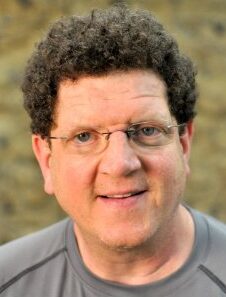
More Senior Health Articles
You Should Think About Your Bone Health
Research has shown that bone strength peaks between the ages of 20 and 30. This means that, after the age of 30, both men and women begin to lose bone mass unless they take action to prevent it. Unfortunately, by the time we begin to think about our bones, we may have already suffered serious damage.
What Affects Bone Health?
According to the Mayo Clinic, many factors affect your bone health
The amount of calcium in your diet. A diet low in calcium contributes to diminished bone density, early bone loss, and an increased risk of fractures.
Physical activity. People who are physically inactive have a higher risk of osteoporosis than do their more-active counterparts.
Tobacco and alcohol use. Tobacco use may weaken bones, as can regularly having more than two alcoholic drinks a day. Alcohol can interfere with the body's ability to absorb calcium.
Gender, size, and age. You're at greater risk of osteoporosis if you're a woman, because women have less bone tissue than men do. Men are also at risk for osteoporosis.
Race and family history. You're at greatest risk of osteoporosis if you're white or of Asian descent. Having a parent or sibling who has osteoporosis puts you at greater risk especially if you also have a family history of fractures.
Hormone levels. Too much thyroid hormone can cause bone loss. In women, bone loss increases dramatically at menopause due to dropping estrogen levels. In men, low testosterone levels can cause a loss of bone mass.
Eating disorders and other conditions. People who have anorexia or bulimia are at risk of bone loss. Stomach surgery (gastrectomy), weight-loss surgery, Crohn's disease, celiac disease, and Cushing's disease can affect your body's ability to absorb calcium.
What Can You Do To Maintain Your Bone Health?
Exercise. Physicians' primary recommendation for strong bones is daily, weight-bearing exercise such as walking, jogging, yoga, Tai Chi, weight training, and resistance exercise. Activities such as biking and swimming don't count because your weight is supported either by the bike or the water.
Maintain a healthy diet. Add several servings of leafy greens and calcium-rich vegetables (like broccoli and kale) to your daily diet. Seafood is also a good source of calcium, especially salmon, sardines, and shellfish like clams, oysters, and shrimp.
Boost your calcium consumption. Calcium isn't the end-all, be-all bone loss cure. The key might be to help the body absorb calcium by pairing calcium-rich foods with those high in vitamin D.
Add vitamin D to your diet. Vitamin D is essential for the absorption of bone-boosting calcium. Boost vitamin D consumption by dining on shrimp, fortified foods like cereal and orange juice, sardines, eggs (in the yolks), and tuna.
Get sun exposure. The body produces vitamin D when exposed to the sun 10-15 minutes of exposure three times per week will suffice.
Find a bone health program that counteracts the effects of osteoporosis. Keep your bones strong.
Other Articles You May Find of Interest...
- Five reasons meditation can be important for the elderly
- The Types of Negligence Residents of an Assisted Living Facility Suffer
- 3 Types of Exercises Best for Seniors With Arthritis
- Independence Boost: How Medical Alerts Help Chronic Conditions
- Over-the-Counter Hearing Aids (OTC)
- Therapeutic In-Home Sauna Service for Homebound Seniors
- Staying Active and Engaged: A Guide to Enhancing Senior Wellbeing

















